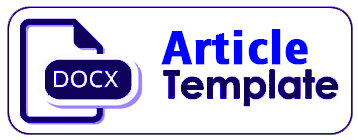Analysis of factors affecting the interest of the millenial generation in using financial management applications
DOI:
https://doi.org/10.32497/ab.v22i2.2915Keywords:
Millennial Generation, Financial ApplicationsAbstract
Personal money management applications are now widely found and can be downloaded for free on the playstore. This application has considerable benefits in helping the millennial generation in managing finances so that the flow of funds in and out can be recorded in detail. By knowing the flow of existing funds, it is hoped that they can manage finances more wisely.
This study aims to determine the percentage of millennial generation who have used financial management applications as well as what factors encourage and hinder the millennial generation from utilizing financial management applications. It is hoped that knowing these factors can become input for financial management application developers to build their products so that they are more desirable and utilized by the millennial generation. In this study several questions will be asked in the form of questionnaires to millennial generations regarding financial management applications. From the results of the research that has been done, it can be concluded that there are still a few users of financial management applications among the millennial population. Some of the factors that hinder the interest in using a financial management application are the lack of quality of the financial management application system as desired (system quality factor), the quality of information provided by the financial management application is incomplete (information quality factor), and distrust of the security of the manager application financial (safety factor). In addition to these factors, there are other factors, namely ignorance of financial management applications and preferring to use conventional recording.Downloads
Published
Issue
Section
License
The copyright of the received article shall be assigned to the journal as the publisher of the journal. The intended copyright includes the right to publish the article in various forms (including reprints). The journal maintains the publishing rights to the published articles.

This work is licensed under a Creative Commons Attribution 4.0 International License.





